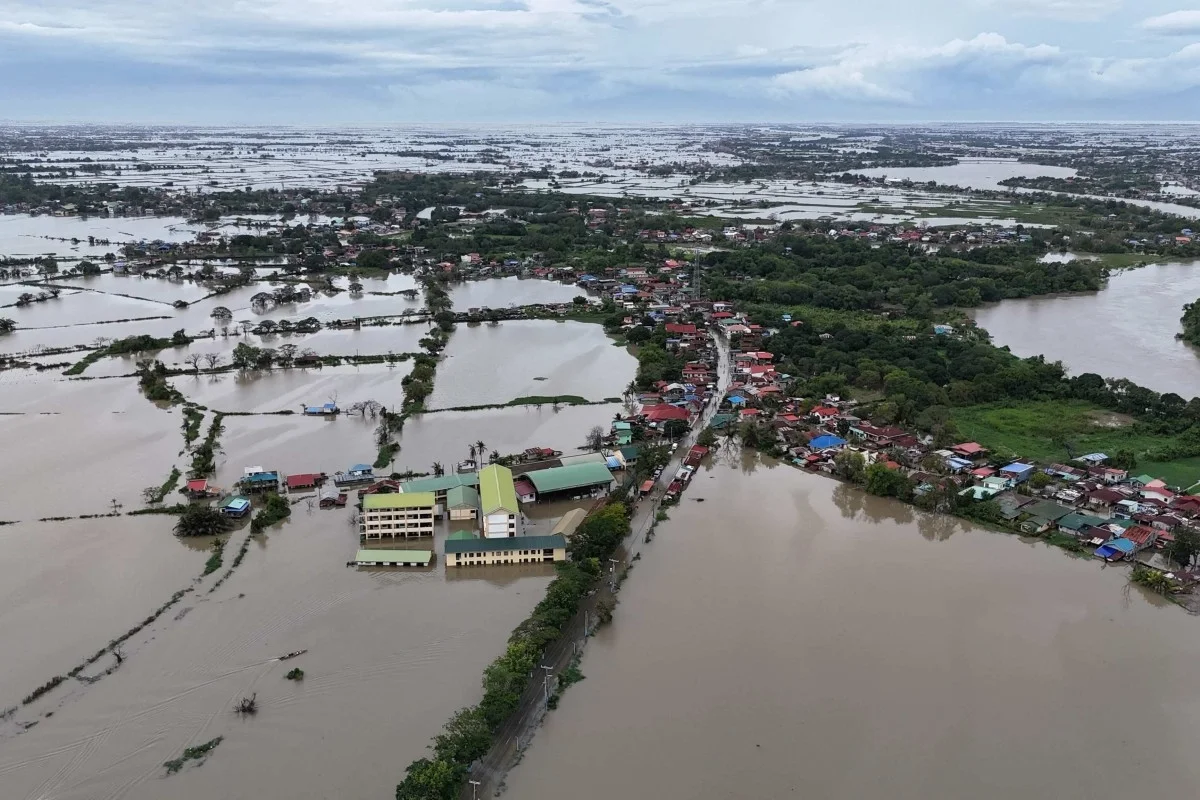Flood-Control Fiasco: A Policy Reckoning for Accountability in the Philippines’ Climate Risk Governance
Flooded villages in Calumpit, Bulacan province, north of Manila, in July 2025, after a river overflowed due to heavy rains brought about by Typhoon Emong | Photo: AFP
In an article by the University of the Philippines Center for Integrative and Development Studies, Weena Gera discusses the flood control controversies in the Philippines, where billions in infrastructure budget and government funds were plundered by public works contractors, leading to “ghost projects.”
The unraveling of irregularities in flood control projects has once again laid bare the entrenched corruption in Philippine public works and infrastructure. The release of the 2025 World Risk Report, naming the country as the world’s most disaster-prone yet again, highlighted the criticality of the issue. Its warnings on flood risks and the intensifying vulnerabilities from climate change and rapid urbanization were grimly underscored by the landfall of severe tropical storm Opong on the very day of the report’s release—September 24, 2025—the 15th storm of the year, leaving intense flooding, devastation, and loss of lives in its wake. The convergence of scandal, disaster, and public indignation—symbolized by the “Trillion Peso March” just days earlier (September 21)—signals a reckoning: calamities are not just natural and climate change phenomena, but moral indictments of state failure.
The ongoing Senate Blue Ribbon Committee inquiries have exposed an elaborate kickback distribution system—anchored in mutual benefit agreements between favored private contractors and a hierarchy of government entities—in plundering public funds from flood infrastructure projects. Political payoffs are normalized as the cost of doing business. In return, favored contractors operate under the protection of district engineers, lawmakers, and executive officials, while ghost projects, substandard works, and hazardous infrastructures proliferate. Testimonies, however, have also revealed a nefarious orchestration of selective truth-telling—designed less to expose systemic theft than to shield political patrons and recalibrate alliances. The spectacle of blame-shifting amid mounting evidence raises the deeper question: can accountability hold in a state where infrastructures of impunity are as deeply embedded as the infrastructures of corruption they protect?
The scandal revolves around two notorious public works contractors: the Discayas, whose companies cornered over ₱31 billion in flood-control projects during Marcos Jr.’s first three years (PCIJ 2025[1]), and the Cos, who secured ₱15.7 billion while holding the legislative purse strings through the House Appropriations Committee (PCIJ 2025[2]). The Discayas were also noted to have hugely profited under the Duterte administration from zero revenues in 2015, to having about P99 million in 2016, on to having multiplied their income to about P16 billion in 2021 from project deals with the government (Manalastas 2025[3]). Yet, we are soon reminded that these shoddy contractors are mainly a symptom of a far-larger scale of theft entrenched in our state apparatus.

